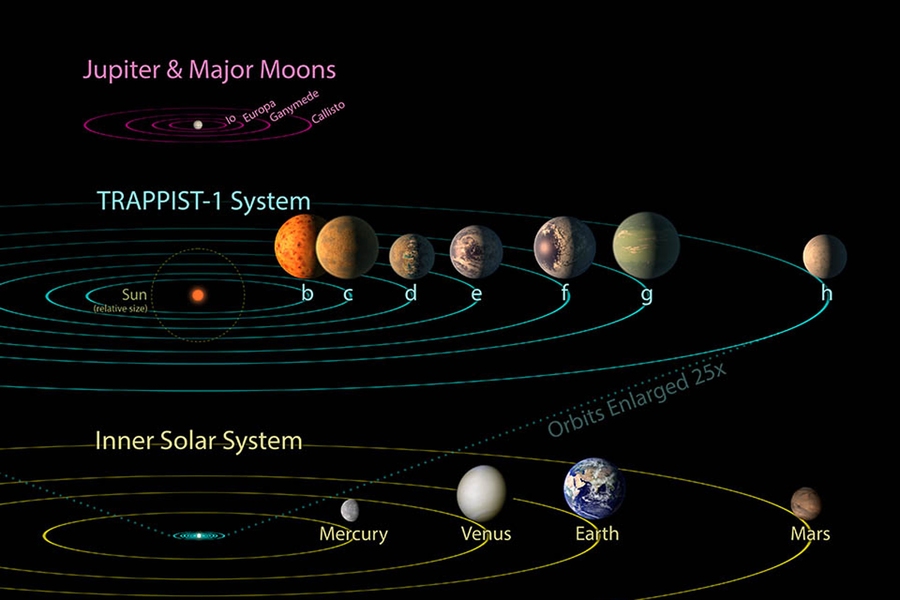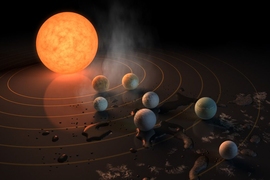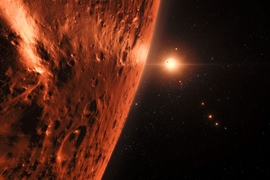NASA has recognized the science team behind the discovery of a distant planetary system with a Group Achievement Award. The award, given by NASA's Jet Propulsion Laboratory (JPL), cites the team for "the outstanding scientific achievement in uncovering the nature of the TRAPPIST-1 system, revealing seven potentially habitable planets around a nearby cool red star." TRAPPIST is the Transiting Planets and Planetesimals Small Telescope, a key tool used in the discovery and the namesake of the system's host star.
Co-investigator Julien de Wit, an assistant professor of planetary sciences in the MIT Department of Earth, Atmospheric and Planetary Sciences (EAPS), accepted the award on Aug. 28 on behalf of the TRAPPIST-1 discovery team at an award ceremony held at JPL.
In February 2017, the researchers, including de Wit and colleagues from the University of Liège in Belgium, announced their discovery, which marked a new record in exoplanet research. The TRAPPIST-1 system is the largest known of its kind outside our solar system, with a total of seven rocky, Earth-sized planets orbiting in the habitable zone — the range around their host star where temperatures could potentially sustain liquid water.
The Group Achievement Award is one among the prestigious NASA Honor Awards, which are presented to a number of carefully selected individuals and groups, both government and non-government, who have distinguished themselves by making outstanding contributions to the space agency’s mission.








